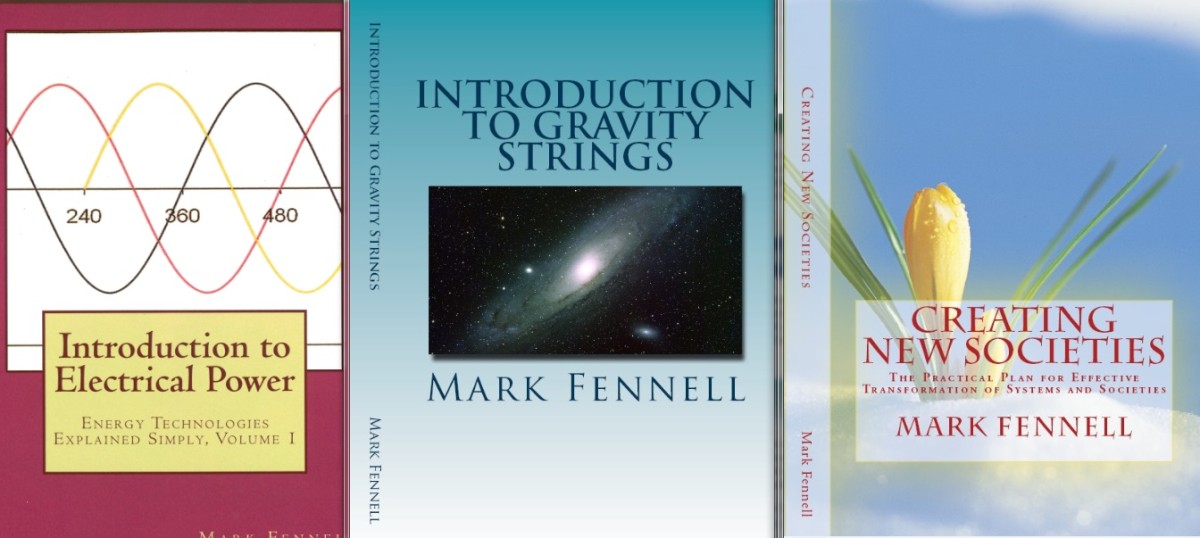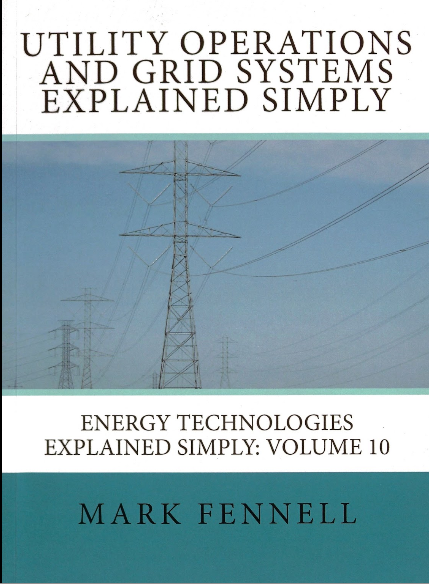Power Grids and Electrical Utilities Explained Simply
Description
Utilities and power grids may seem complex, yet this book will guide you easily through the mysteries. In this book you will learn the basic operations of utilities and the basic operations of grids. You will learn how power is traded in the power markets.
Here you will learn how utilities and grids maintain quality control, including how they monitor the flow of power and how they make adjustments as needed. You will learn how power failures occur and how we can minimize power failures in the future.
You will also learn a great deal about the future of power distribution, particularly in the areas of distributed generation and smart grids.
No technical background is required; this book will explain everything you need to know about the operation of utilities and power grids in a way that any reader can understand.
This book is designed for policy-makers, community activists, and curious citizens. This book is also designed as an essential reference for energy technology students and for anyone working in the electrical power industry.
Chapters Include
- Utility Company Operation Basics
- Monitoring and Communications Systems
- Quality Control for Utilities
- Basic Concepts of Grids
- Grid Operations
- Quality Control for Grids
- Smart Grids
- The Future of Electrical Distribution
- Appendix and Index
Expanded Table of Contents for Power Grids and Electrical Utilities Explained Simply
Passion Behind The Future of Grids
Note that this book differs from all other books in the series because in this book I will be openly passionate about a particular topic. In this case my passion is related to the future of grids.
Grids affect all of us, and in a very large way. Unlike a single power plant or a local utility where the choice affects only a few people, what happens on a large grid will affect all of us. Therefore the design of a grid matters greatly.
After years of research, travels, and discussions, I have arrived at some definite conclusions regarding grids. There are two clear paths. The first path is the one we are on. It leads to large scale power outages, unreliable power, economic uncertainty, and chaos. The other path will provide reliability, safety, and economic security…and this second path will provide those benefits for decades. This second choice is clearly the better path.
And yet the few experts who talk about this better path are not being heard. Therefore this is an issue on which I cannot be complacent. We need to be on this better path, moving toward this better future of grid systems. I encourage policy-makers and citizens to move toward this second path. On this issue, I cannot remain unbiased.
M.F.
Items Found ONLY in this Book, and Features of this Book
Research for Power Grids and Electrical Utilities Explained Simply Publications
Details Worth Noting in This Book (Chapter by Chapter)
10.1 Utility Company Operation Basics
The first chapter provides an overview of utility operation, focusing on quality control for utilities. This chapter discusses in detail how to ensure that there is enough power to meet demand at any given time.
10.2 Monitoring and Communications Systems
The second chapter discusses monitoring and communication systems. This chapter explains the SCADA system, including the components and operation. This chapter also explains the types of translation devices and the options for communication methods.
10.3 Quality Control for Utilities
Chapter three discusses the specific factors which affect the quality of power (including voltage, frequency, and temperature). The majority of this chapter describes the causes, effects, and protection against significant variations for each factor.
10.4 Basic Concepts of Grids
Chapter four provides a broad perspective of grids, with further clarification by comparing grids to the highway system. You will learn the possible players in a grid and their roles. You will learn the jobs of the grid manager. A major section of this chapter is where you will learn the advantages and disadvantages of grids, followed by an overview of an ideal grid system.
10.5 Grid Operations
In chapter five we go step by step through the sequence of grid operations. By the end of this chapter you will understand the details of grid operations, including several common variations.
10.6 Quality Control for Grids
Chapter six discusses grid failures and quality control for grids. In this chapter you will learn how blackouts occur and how we can prevent them. The majority of chapter six provides detailed explanations of how to maintain quality control in any grid system, and thereby prevent power outages.
You will learn about reliability oversight organizations such as NERC, FERC, and ERO. You will also learn the major sections of the Energy Policy Act of 2005 (most of which relate to reliability).
10.7 Smart Grids
Chapter seven discusses “Smart Grids”. There are numerous technologies associated with the term “smart grid”, therefore chapter seven begins with an overview of smart grids, followed by an overview of smart grid technologies. Also, because smart grids are rapidly implemented yet often used in unethical ways, much of this chapter is devoted to the proper and improper uses of smart grid technologies.
10.8 The Future of Electrical Distribution
The final chapter discusses the future of electrical distribution. This is a very important chapter because the paths we take when developing power distribution systems will affect our safety, reliability, and economic security for many years.
After years of research I have learned that the existing trend toward a national grid is a direct path to large scale disasters. I have also learned that an alternate path, one of locally produced power and smaller power plants, will provide reliable power and a stable economy for decades.
Therefore, this chapter explains the vision of this second path for the future of electrical distribution. The description of this vision is then supplemented with benefits of the second path. Each benefit of the second path is discussed in great detail. This chapter also discusses some additional features which are valuable for the ideal future of electrical distribution.
E-books on Power Grids and Electrical Utilities Explained Simply
Videos related to Power Grids and Electrical Utilities Explained Simply

